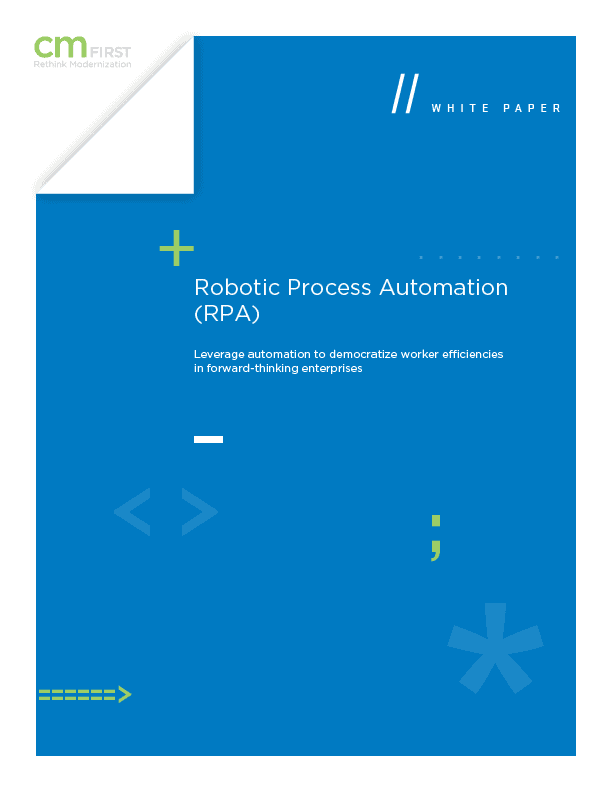Download our White Paper:
RPA isn’t yet a decade old, but it’s reach is fast accelerating and looks to continue it’s rapid growth. RPA is the fastest-growing software segment officially tracked by Gartner, with year-over-year growth of more than 63% in 2018, to $846 million in revenue. According to Forrester, RPA is on track to reach $2.9 billion by 2021. Further estimates by Forrester and others put RPA in the tens of billions in revenue by the late twenties.
Fill out the form below, and a link to download the white paper will be emailed to you.
Read the Excerpt
With robotic process automation (RPA), companies can leverage bots to automate a series of keystrokes within or between applications to improve worker productivity. The bots typically replace or augment repetitive human tasks, and if planned, scripted, and managed properly can bridge applications, reduce input errors, improve customer service, and save significant time and money.
In practical terms, from Wikipedia:
“RPA tools have strong technical similarities to graphical user interface testing tools. These tools also automate interactions with the GUI, and often do so by repeating a set of demonstration actions performed by a user. RPA tools differ from such systems including features that allow data to be handled in and between multiple applications, for instance, receiving email containing an invoice, extracting the data, and then typing that into a bookkeeping system.”
Thanks to ease of implementation and fast ROI, business units are using RPA to turbocharge the productivity of their front-line business users, and many are implementing RPA projects independent of IT department job queues. Naturally, many IT managers are skeptical of RPA, but most internal stakeholders find compelling benefits:


